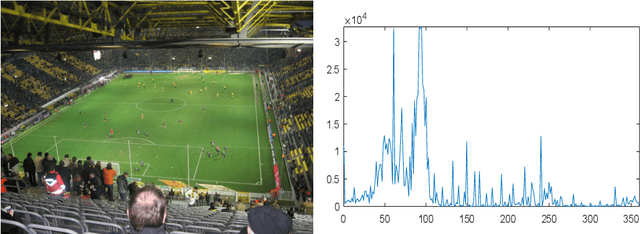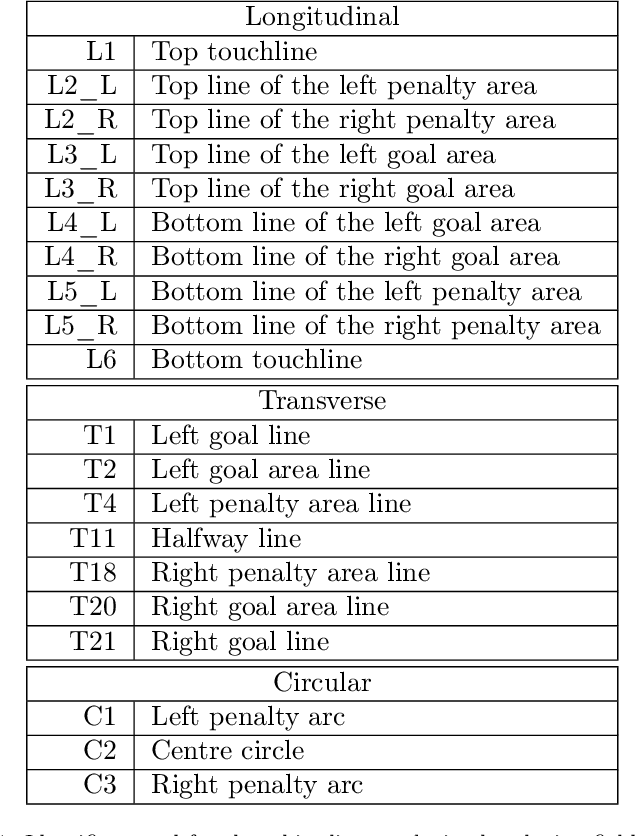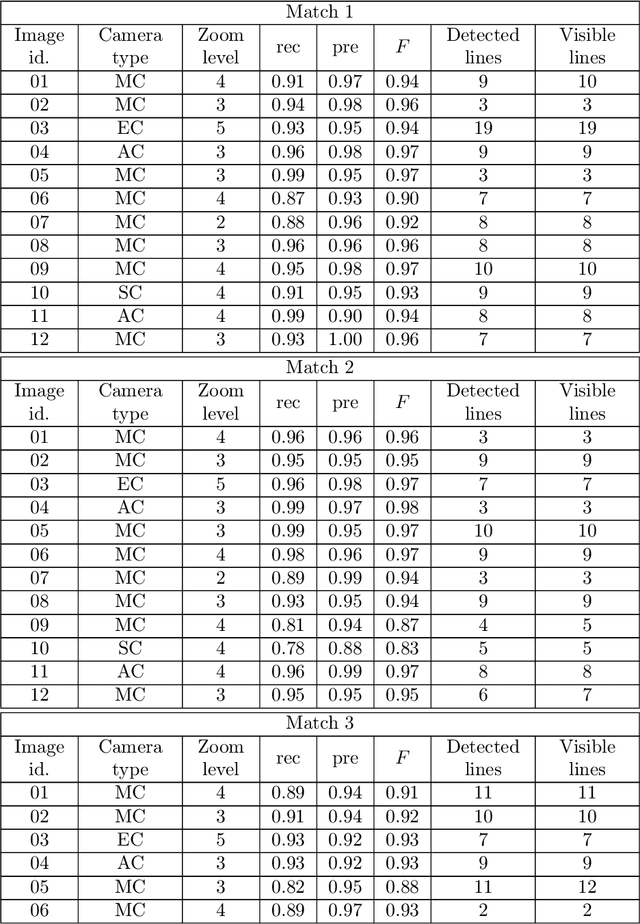Carlos Cuevas
Soccer line mark segmentation with stochastic watershed transform
Aug 14, 2021



Abstract:Augmented reality applications are beginning to change the way sports are broadcast, providing richer experiences and valuable insights to fans. The first step of augmented reality systems is camera calibration, possibly based on detecting the line markings of the field of play. Most existing proposals for line detection rely on edge detection and Hough transform, but optical distortion and extraneous edges cause inaccurate or spurious detections of line markings. We propose a novel strategy to automatically and accurately segment line markings based on a stochastic watershed transform that is robust to optical distortions, since it makes no assumptions about line straightness, and is unaffected by the presence of players or the ball in the field of play. Firstly, the playing field as a whole is segmented completely eliminating the stands and perimeter boards. Then the line markings are extracted. The strategy has been tested on a new and public database composed by 60 annotated images from matches in five stadiums. The results obtained have proven that the proposed segmentation algorithm allows successful and precise detection of most line mark pixels.
Optimal Piecewise Linear Function Approximation for GPU-based Applications
Oct 10, 2015



Abstract:Many computer vision and human-computer interaction applications developed in recent years need evaluating complex and continuous mathematical functions as an essential step toward proper operation. However, rigorous evaluation of this kind of functions often implies a very high computational cost, unacceptable in real-time applications. To alleviate this problem, functions are commonly approximated by simpler piecewise-polynomial representations. Following this idea, we propose a novel, efficient, and practical technique to evaluate complex and continuous functions using a nearly optimal design of two types of piecewise linear approximations in the case of a large budget of evaluation subintervals. To this end, we develop a thorough error analysis that yields asymptotically tight bounds to accurately quantify the approximation performance of both representations. It provides an improvement upon previous error estimates and allows the user to control the trade-off between the approximation error and the number of evaluation subintervals. To guarantee real-time operation, the method is suitable for, but not limited to, an efficient implementation in modern Graphics Processing Units (GPUs), where it outperforms previous alternative approaches by exploiting the fixed-function interpolation routines present in their texture units. The proposed technique is a perfect match for any application requiring the evaluation of continuous functions, we have measured in detail its quality and efficiency on several functions, and, in particular, the Gaussian function because it is extensively used in many areas of computer vision and cybernetics, and it is expensive to evaluate.
* 12 pages, 12 figures, post-print, IEEE Transactions on Cybernetics, Oct. 2015
 Add to Chrome
Add to Chrome Add to Firefox
Add to Firefox Add to Edge
Add to Edge